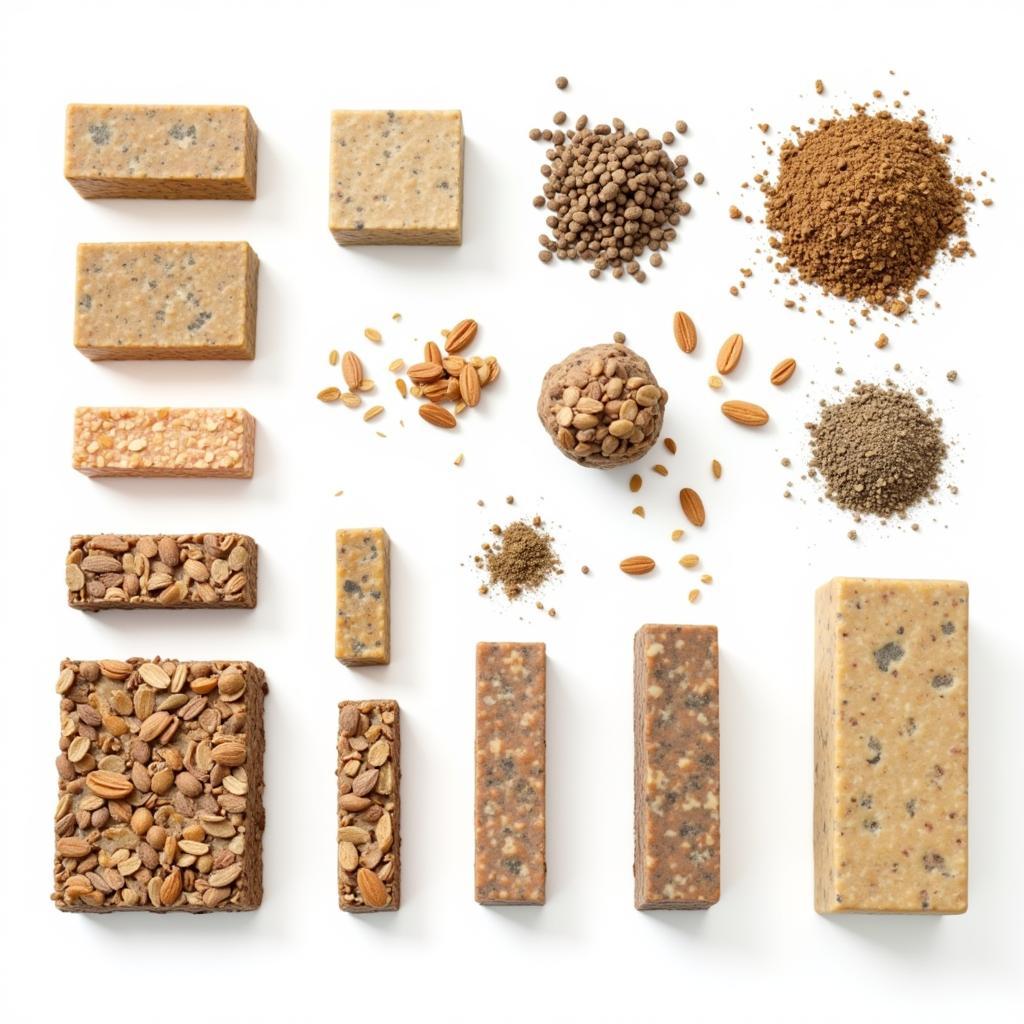Deer Food Blocks, also known as supplemental feed blocks, are a common sight in many areas, particularly during the harsh winter months. They offer a convenient way to provide deer with essential nutrients when natural food sources are scarce. But what exactly are they, and are they truly beneficial for deer populations? Let’s delve into the world of deer food blocks and explore their pros, cons, and best practices.
What Are Deer Food Blocks?
Deer food blocks are compressed blocks of feed designed to supplement a deer’s natural diet. They typically contain a mixture of grains, minerals, vitamins, and other nutrients, offering a concentrated source of energy and essential elements. These blocks can be especially helpful during periods of food scarcity, such as winter or extended drought. They can also help deer build up fat reserves. Choosing the best winter food for deer is crucial for their survival.
Why Use Deer Food Blocks?
Deer food blocks can provide several benefits: they are convenient to transport and store, they offer a controlled and consistent source of nutrition, and they can help attract deer to specific areas for observation or hunting. They can help support healthy antler growth and overall deer health, particularly when natural forage is limited. However, it’s crucial to understand that deer food blocks should not be the primary food source for deer. A balanced, natural diet is always best.
The Nutritional Content of Deer Food Blocks
Deer require a balanced diet to thrive. A deer food block provides supplemental nutrients. A typical deer food block might contain ingredients such as corn, oats, molasses, soybean meal, vitamins, and minerals. The specific nutritional composition varies depending on the manufacturer and the intended purpose of the block. Some blocks are designed for specific seasons, while others are formulated for year-round use. Always check the label to ensure the block meets the nutritional needs of the deer in your area.
Are Deer Food Blocks Healthy?
While deer food blocks can be a helpful supplement, they should be used responsibly. Overreliance on food blocks can lead to digestive issues, unnatural feeding patterns, and an increased risk of disease transmission. Deer can become dependent on the readily available food source and may neglect their natural foraging behavior. A diverse natural diet, including browse, forbs, and mast, is always the healthiest option for deer. Consider a summer deer food plot mix to provide a more natural food source.
Choosing the Right Deer Food Block
Choosing the right deer food block involves understanding the nutritional needs of deer in your specific region. Consider the time of year, the availability of natural forage, and the overall health of the deer population. Consult with wildlife experts or local feed stores for recommendations tailored to your area.
How to Use Deer Food Blocks Effectively
Place deer food blocks in areas where deer frequent, but away from high-traffic areas or areas where they might be vulnerable to predators. Ensure a clean water source is nearby. Monitor the consumption rate and adjust the number of blocks accordingly to avoid waste and minimize the risk of attracting unwanted wildlife.
Understanding the Deer’s Diet in a Broader Ecosystem
The role of deer in the temperate rainforest food web is crucial. Deer are herbivores, consuming a variety of plants, including grasses, leaves, twigs, and fruits. Their foraging behavior influences the growth and distribution of plant species within the ecosystem. Understanding the interconnectedness of the food web helps us make informed decisions about supplemental feeding practices. plant growth food plays a vital role in maintaining a healthy and balanced ecosystem.
What Other Foods Can Deer Eat?
Deer have a diverse diet and consume various types of vegetation depending on the season and availability. They browse on leaves and twigs, graze on grasses, and eat fruits and nuts when available. A diverse diet is crucial for their overall health and well-being.
 Different Types of Deer Food Blocks
Different Types of Deer Food Blocks
Conclusion
Deer food blocks can be a valuable supplement to a deer’s diet, particularly during times of food scarcity. However, it’s essential to use them responsibly and as part of a balanced approach to deer management. By understanding the nutritional needs of deer and the potential impacts of supplemental feeding, we can make informed decisions that support healthy deer populations and a thriving ecosystem. Understanding the nuances of deer food blocks ensures that we are making choices that benefit both the deer and the environment. For further assistance, please contact us.
FAQs
- How often should I put out deer food blocks? It depends on the deer population density and the availability of natural food sources. Monitor the consumption rate and adjust accordingly.
- Can deer food blocks harm deer? Overreliance on food blocks can lead to digestive problems and unnatural feeding patterns.
- What are the best ingredients for deer food blocks? A balanced mix of grains, minerals, and vitamins is ideal. Consult with local experts for specific recommendations.
- Where should I place deer food blocks? Place them in areas where deer frequent, but away from high-traffic areas or areas where they might be vulnerable to predators.
- Are deer food blocks necessary? They can be beneficial during times of food scarcity but are not essential for a healthy deer population with access to natural forage.
- What are the alternatives to deer food blocks? Food plots, providing native browse, and improving habitat are excellent alternatives.
- Can I make my own deer food blocks? Yes, but research thoroughly to ensure a balanced and safe nutritional composition.
Need help? Contact us: Phone: 02437655121, Email: minacones@gmail.com. Visit us at 3PGH+8R9, ĐT70A, thôn Trung, Bắc Từ Liêm, Hà Nội, Việt Nam. We have a 24/7 customer support team.